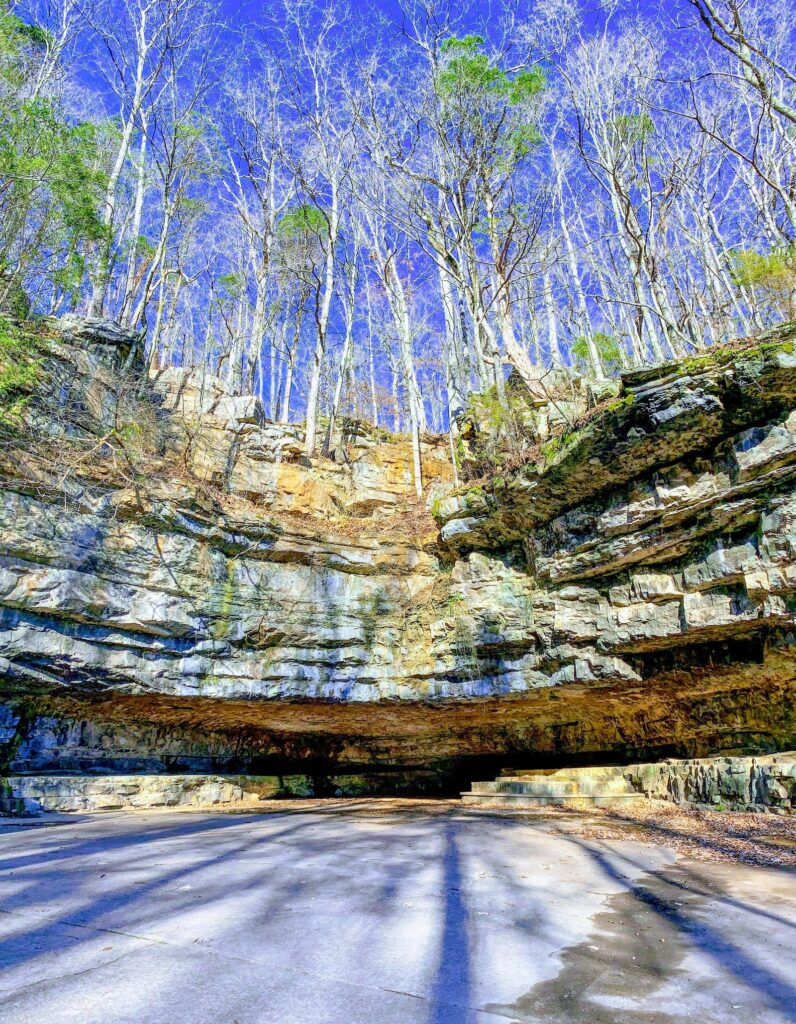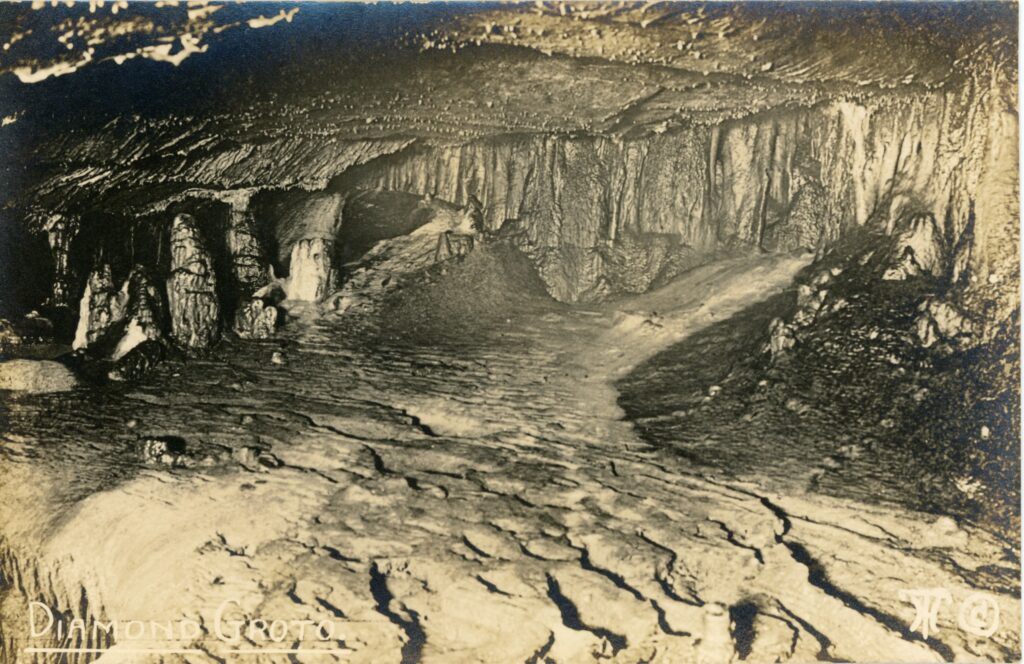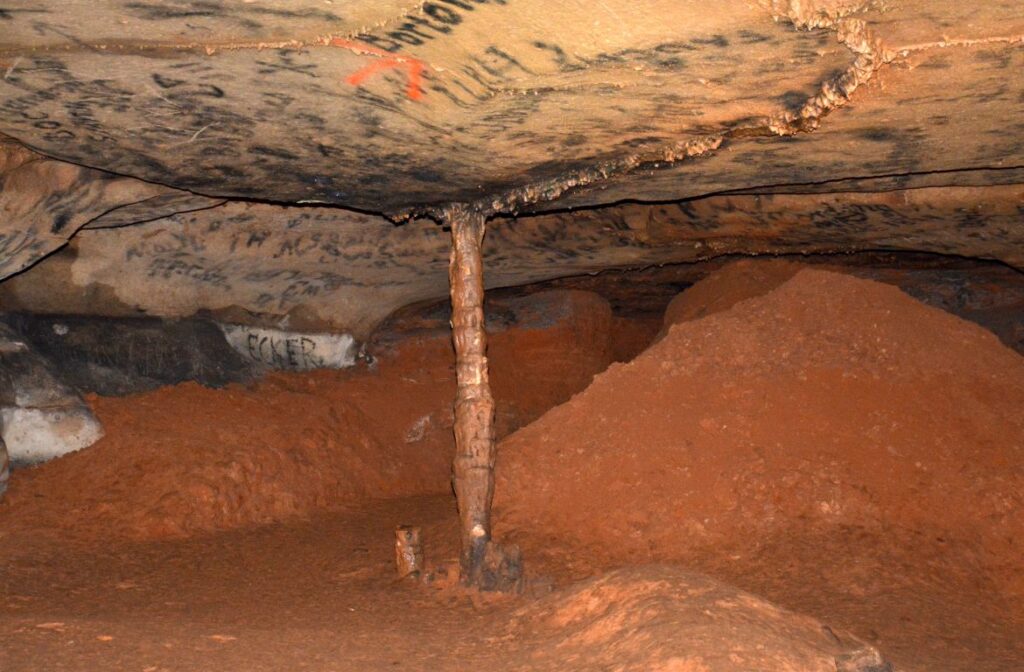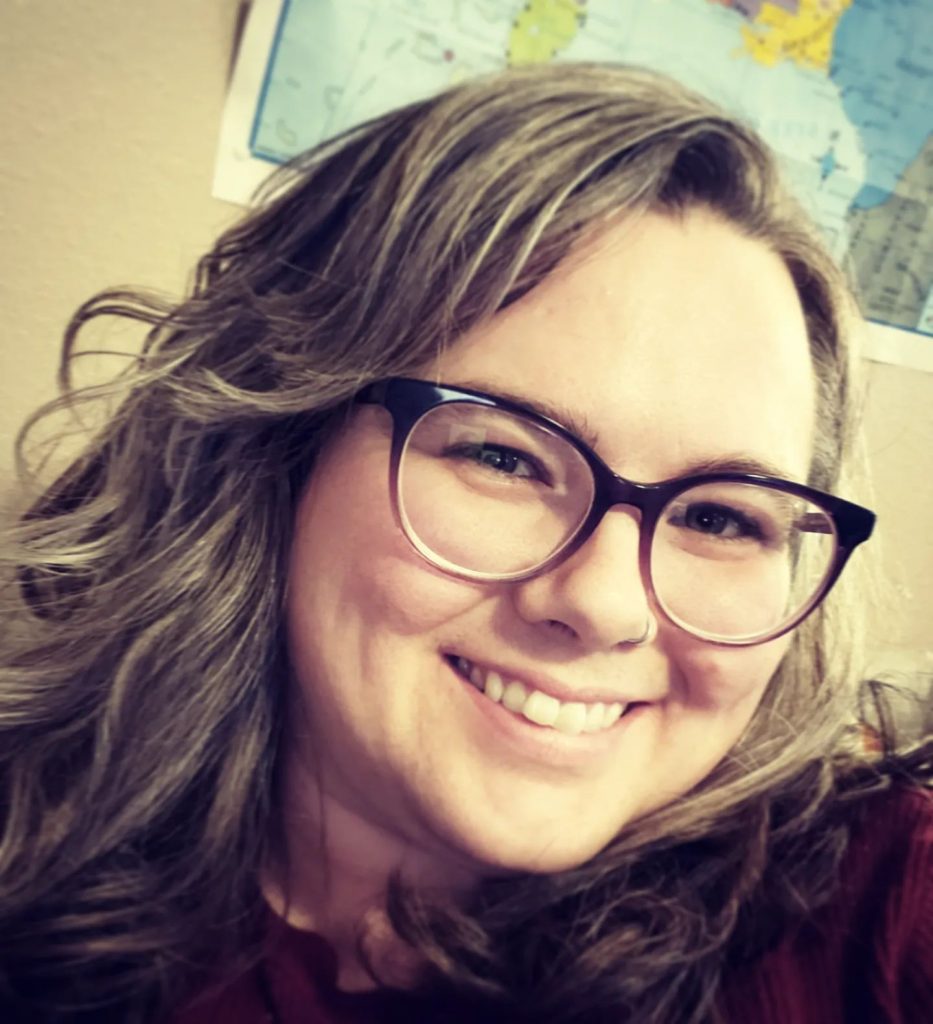By Meghan E. Gattignolo
When you do get a chance to walk through Dunbar Cave again, one thing the guides will ask is some variation of the question: What in your life do you consider sacred? A church is a sacred place to many, but some people find their grandmother’s kitchen equally so. A stadium where a favorite sports team plays can feel sacred, or a quiet theater right before the movie starts. A space where something bigger than yourself can always be felt is sacred to you. This feeling of sanctity has certainly always been a part of being human.


Sacred Art
Even though excavations in the cave mouth in the 1970s revealed that people had been using Dunbar Cave for at least 10,000 years, the understanding of what the cave meant to prehistoric people was very narrow.
When in 2005 researchers identified drawings on the limestone walls of the cave’s interior as Mississippian era indigenous drawings, about 200 to 400 years older than the first Spanish exploration into Tennessee, a better understanding about what the cave was used for began to take shape. Both pictographs (drawings painted on the stone) and petroglyphs (drawings carved into the stone) were found on the same wall and seem to depict celestial symbols.
Beau Carroll, a member of the Eastern Band of Cherokee and archaeologist who has researched cave art, believes Dunbar Cave’s prehistoric art depicts elements of native spiritual beliefs. The Cherokee, and very likely the Mississippians who are the cultural ancestors of the Cherokee and other Southeastern tribes, believe the universe and all of existence consists of three layers: the Upper, Middle, and Under Worlds. According to this tradition, souls fall down from the Upper World and are born into the Middle World – which is where all living things can be found. Death takes the living down into the Under World to start the cycle again.
Balance is key to this belief system, and the Native Americans who tread into Dunbar were almost definitely concerned with throwing that balance off. Caves were thought to be passageways to the Under World, and because the Under World is the connector to the Middle and Upper Worlds, it is a place to be taken seriously. People did not go there to dance and have parties – activities that belonged to the Middle World – but more likely spent any time in the cave with great solemnity.

Sacred Pools
Even though caves appear to be solid, unchanging hard stone, some are always growing. Dunbar Cave is a great example of this. Though it is quite old, Dunbar Cave is considered a fast-growing “living” cave. The water that drips down on your head during a tour – cave kisses – is the secret to its immortality. Water dripping through slabs of underground limestone brings sediment with it, and these fresh limestone deposits grow new formations like stalactites and stalagmites, at a rate of about an inch of rock growth every hundred years.
This also happens with pools of water on the floor of the cave. Water collecting on the floor of a cave creates rimstone dams, a feature best seen in Independence Hall during a cave tour. Over a long period of time, the rimstone dams compound on each other and form travertine. So anywhere you’d find travertine in a cave, you know there was once a pool of water.
While building the boardwalk structures inside the cave several years ago, in the same room as the cave art, Dunbar Cave staff found human artifacts embedded inside slabs of travertine under the cave mud. This implies that for a long time that people, the Mississippians and even further back, had been intentionally putting objects into pools of water.
Why is not clear, but water has been a sacred substance throughout all human cultures. Water has the power to wash away sins, the ability to clean wounds, and nearly every large city or center of commerce is near a river, ocean, or lake. So, it’s not a stretch to believe the same water that gives the cave life would be special enough to imbue significant objects with special power, or maybe dropping objects into the pools were a ritualistic way to show respect to the spiritual Under World and maintain universal balance.

Still Sacred
In the 21st century, we don’t all agree on what is sacred. However, National Geographic and Morgan Freeman found Dunbar Cave to be sacred enough to feature the cave in an episode of the show “The Story of God” in 2017. Freeman spoke with Carroll and Dr. Jan Simek, both of whom are considered among the top academics on the cave, about the drawings and reasons the Mississippians would have found the cave sacred. You can also see Simek and Carroll speak about the cave in this film made for the 4K virtual reality tour available at the visitor center.
More recently, Cherokee syllabary has been found inside Dunbar Cave, which can also be viewed on a cave tour. The Cherokee language is the only Native American language to have a written alphabet, created by Sequoyah Tecumseh in the 1820s. Having a written language helped the Cherokee to leave messages behind in the secrecy of caves during and after the Indian Removal which displaced many tribes and separated them from their loved ones. Dunbar Cave was evidently recognized as a safe and sacred space by members of the Cherokee when the rest of their world was thrown out of balance.

While you might not be able to take a cave tour right now, you can join Park Ranger Adam Neblett in the auditorium on Sunday, July 7th at 3pm to learn more about Dunbar Cave State Park’s epic history. Neblett’s talk is part of The Customs House Museum & Cultural Center’s Sundays @3 lecture series.
Virtual cave tours at the Dunbar Cave State Park Visitor Center are available daily upon request.
Resources:
Material and information collected by Dunbar Cave State Park staff

Meghan E. Gattignolo is a freelance writer and longtime Clarksville, TN resident. She loves to obsess about historical subjects and annoy her family daily with unsolicited random facts. Meghan holds a History B.A. from Austin Peay State University and lives in town with her husband and two children.